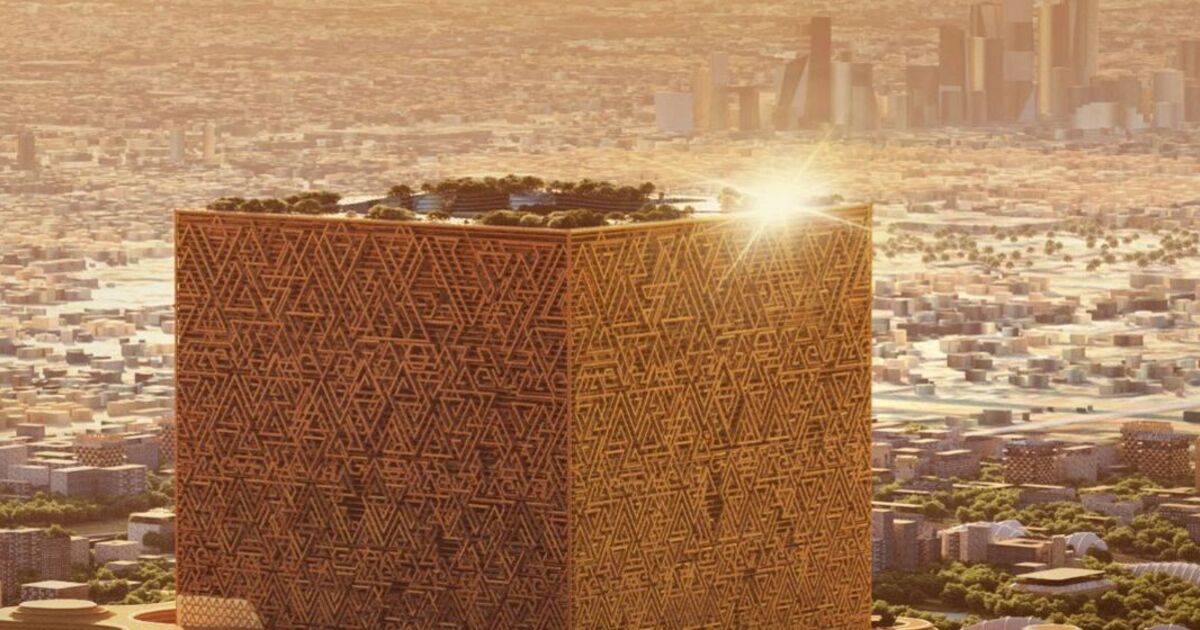Construction has officially begun on a sprawling mega-project building big enough to fit 250,000 people which is the size of 20 Empire State buildings.
Predicted to cost £39 billion, the cube-shaped Mukaab supertall skyscraper in Riyadh, the capital of Saudi Arabia, will be 400 metres high and wide, meaning it will be the world’s largest building when construction is completed.
The cube-shaped building will be enclosed in a facade made of overlapping triangular forms and will contain two million square metres of shops, a roof garden and cultural and tourist attractions.
Hailed as Riyadh’s new capital, New Murabba was unveiled in February 2023 as a downtown city district with a price tag estimated by Knight Frank at £39bn (US$50bn).
Once completed The Mukaab will be the focal point of the 7.3-square-mile downtown that aims to establish Riyadh as a modern hub of tourism, business, and cultural innovation.
Developers hope the building will be like no other, plans for the building include placing a colossal dome inside The Mukaab which would be covered by a sea of holograms. These holograms will transport visitors to the bottom of the ocean or even on the surface of Mars.
Designs for the ambitious project including placing a sky garden at the top of the building. The Mukaab is being funded by Saudi Arabia’s central Public Investment Fund.
Michael Dyke, CEO of the project, called the mega-project the “most complex engineering thing ever undertaken”.
The project is set to be completed in six years in 2030, according to the Saudi Arabian government. “The developers could not be more convinced of the completion of this record-breaking building”, said Youtuber MegaBuilds.
Speaking in October 2024, Mr Dyke said: “We have 2,283 days until December 31 and that will be the point by which the core downtown will be online.”
The project is part of the Vision 2030 which hopes to open up the country to the rest of world.
However, the project has drawn criticism after an ITV documentary titled Kingdom Uncovered: Inside Saudi Arabia reported that laborers were working longer hours than legally prescribed.
The documentary alleged that workers were working over the maximum 60 hours weekly and were only getting around four hours of sleep.
It has also attracted controversy within the Muslim community who compared its design to the Kaaba, a stone building in the holy city of Mecca.

